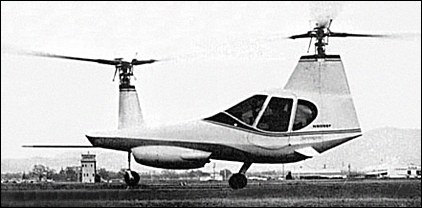
| Filper Beta 200 project |  |
 |

| Filper Beta 200 project |  |
 |
|
Under the direction of William Orr, Filper Research designed a novel helicopter using the 'Gyroflex Rotor', which employed special balance weights fitted to the roots of the rotor blades instead of conventional flapping or lead-lag hinges, or other hub stability devices. This concept was tested on the Filper Helicopter (N9712C) which had fore and aft rotor pylons and the pilot sitting astride a central beam which also carried the engine. The commercial development, however, was the Filper Beta 100A. This was a tandem rotor machine with a two-seat cabin and pylon at the rear, and the engine with the forward pylon in front. This curious arranagment resulted in the pilot being unusually far from the front of the helicopter. The Beta 200 prototype (N5000F) was first flown on 26 May 1966. Filper planned several versions of the Beta with either two seats (Model 200A and 300) or four seats (Model 400A and 600A). The four-seat models had a fuselage which was stretched by 36-inches and the first Beta 400A (N5003F) was flown on 13 July 1967. The Beta models had various powerplants - namely the 210hp Continental IO-360-E (Model 200A), Allison 250-C18 turbine (Model 300) and 250hp Continental IO-520 (400A). Details of the Model 600A are unknown. Registration records show that 32 Betas were completed, comprising two Model 100As, 29 Model 400As and one Model 600A, but there is some doubt as to whether all of these were completed. It is believed the company ceased operations in 1969. R.Simpson "Airlife's Helicopter and Rotorcraft", 1998
|